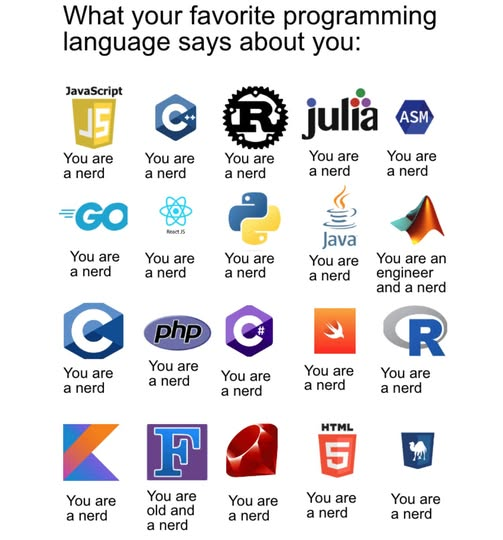this post was submitted on 28 Feb 2025
414 points (96.8% liked)
Programmer Humor
21896 readers
2806 users here now
Welcome to Programmer Humor!
This is a place where you can post jokes, memes, humor, etc. related to programming!
For sharing awful code theres also Programming Horror.
Rules
- Keep content in english
- No advertisements
- Posts must be related to programming or programmer topics
founded 2 years ago
MODERATORS
you are viewing a single comment's thread
view the rest of the comments
view the rest of the comments

Wrong. Well, at least incomplete.
You need user interaction (e.g., clicking on a button) and HTML & CSS for Turing Completeness, apparently.
It's a programming language regardless of it's completeness. You give a computer instructions, in a DSL, it gets interpreted.
Don't gate keep.
Who is “it” which interprets things? Is it part of HTML/CSS?
The browser. When it reads the HTML and creates a DOM based on the provided instructions.
So where in that can I encode an arbitrary program? Like one could do in JavaScript?
Create a table of checkboxes with the rule 110 CSS applied.
Translate your program to a rule 110 program and put it in the top row of the table.
Advance the computation by checking the marked (orange in the example) checkboxes row by row.
Example
Well yeah, with CSS and user interaction it’s understandable… as I’ve linked above.
The question was if this is possible for purely-HTML markup descriptions without CSS nor clicks, and it was a rhetorical one.